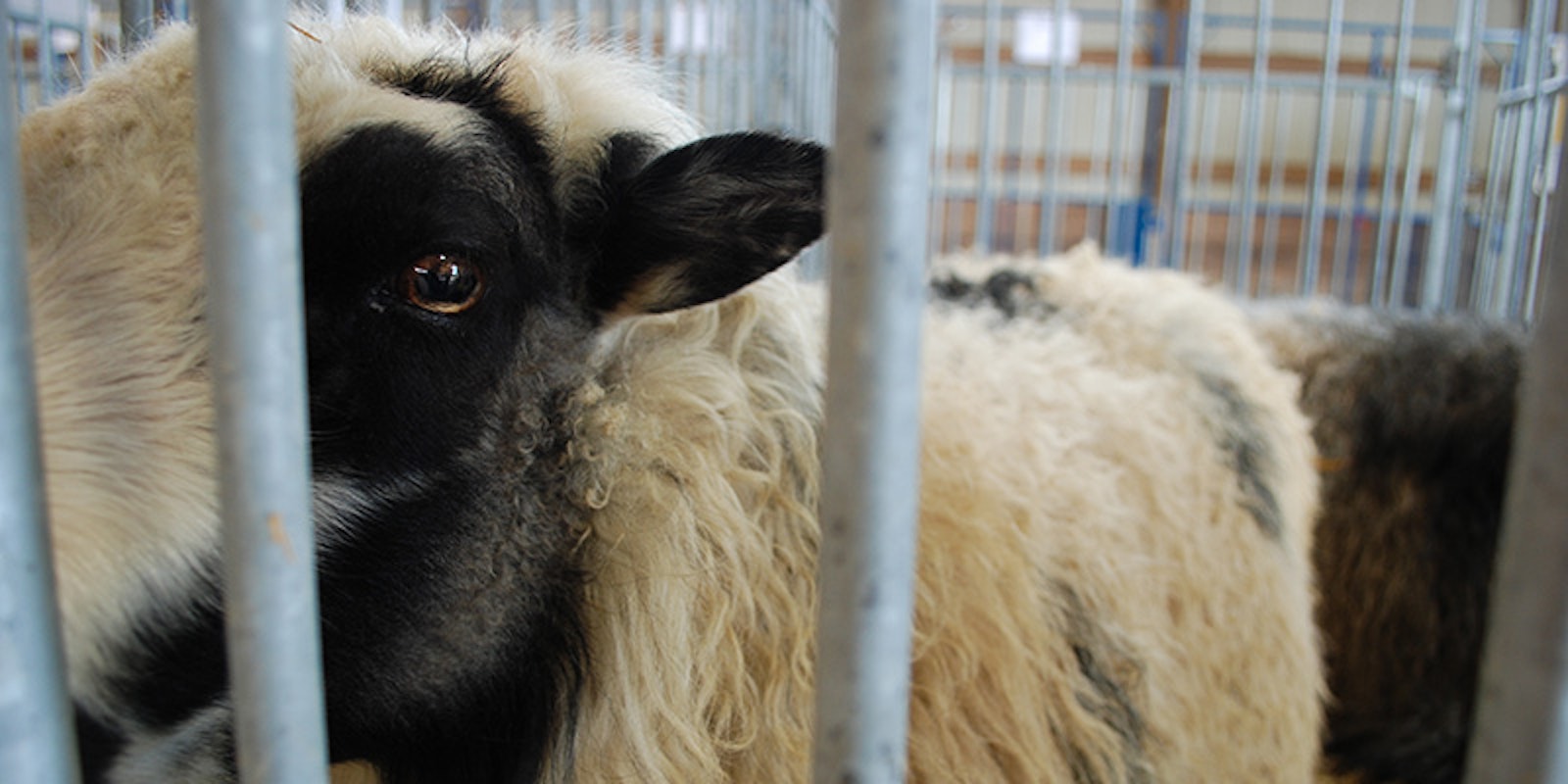Excuse me while I find my soapbox . . .
Sheep Myths
Border Leicester begin playing and flocking with their peers within a few days of birth. Watching them play and run is one of my life’s great joys—I posted videos here and here.
1. “A flock of sheep will flock.”
A group of sheep is called a flock, but flock is also a verb used to describe the habit sheep have for moving as a group. They are able to move as one mass, often coming into a tight cluster, or in small groups they might follow one another nose to tail. This helps them stay together as the flock navigates the landscape and protects against predators. However, not all flocks will flock. I learned this lesson while working with a mixed flock of sheep in Vermont. The entire group of 120 sheep would start moving in the desired direction as one, beautiful being . . . and then the five Icelandic ewes would run in five different directions with in an incredibly unhelpful vigor. Icelandic sheep are one of the breeds of sheep that have evolved to spread out on the landscape, making better use of space and looking in each nook and cranny for delicious forage. (Editor’s note: Read about how shepherds train herding dogs to keep a flock together in “Crook and Whistle: A Peek Inside a Sheep Dog Trial.”)
2.“Sheep are stupid.”
Sheep are not stupid. In fact, research has shown time and again that they are quite intelligent. An article published in Nature several years ago summarized loads of research pointing to the problem-solving skills and memory retention of ovine intelligence. Studies have shown that an individual sheep can remember fifty different sheep faces for two years. Additionally, they have an unusual ability to recognize their shepherds in photos.
Sigrid’s locks before (left) and after (right) washing. A fleece that is a warm, yellowish color will often be bright white once the suint is removed.
3. “Raw fleece contains sheep sweat.”
Suint is a term used for the potassium-laden, salty stuff mixed with wool grease in a raw fleece. Often referred to as “sheep sweat,” suint is produced by the skin’s sebaceous glands as in humans. Unlike humans, however, sheep only have a few sweat glands: one in the corner of each eye, between each of their cloven hooves, and one on each side of the udder. Many spinners soak fleeces in cold water prior to scouring, which removes only the suint and some accompanying grime.
The more you know . . .



